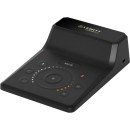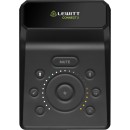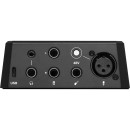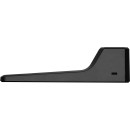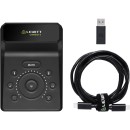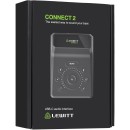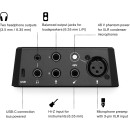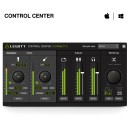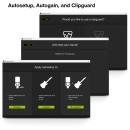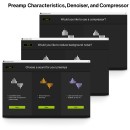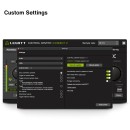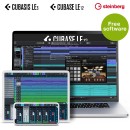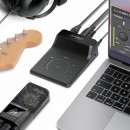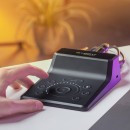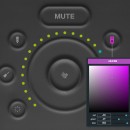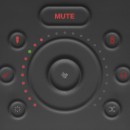Lewitt CONNECT 2 Audio Interface: Comprehensive Review
- Dual USB-C connectors for versatile connectivity
- 24-bit/96kHz resolution for professional-grade audio quality
- Ultra-low latency performance
- Two XLR/TRS combo inputs with high-quality preamps
- 48V phantom power for condenser microphones
- Zero-latency direct monitoring with mix control
- Dedicated headphone output with independent volume control
- Rugged metal housing for durability
- Compatible with Windows, macOS, and iOS devices
- MIDI I/O for integrating external MIDI gear
Product Specifications, Advantages, and Disadvantages
The Lewitt CONNECT 2 Audio Interface is a high-quality, versatile tool designed for musicians, podcasters, and content creators who demand superior sound performance. This compact yet powerful interface offers ultra-low latency and pristine audio fidelity, ensuring that recordings and live performances are captured with the utmost clarity and precision. The CONNECT 2 is equipped with advanced 24-bit/192kHz resolution, providing professional-grade audio quality that meets the needs of both amateur and professional users.
One of the standout features of the CONNECT 2 is its intuitive user interface, which makes it incredibly easy to use even for beginners. The device features high-quality preamps that offer a wide dynamic range and low noise, ideal for capturing vocals and instruments with exceptional detail. Additionally, the interface includes versatile connectivity options, such as XLR/TRS combo inputs and high-impedance instrument inputs, making it adaptable to a wide range of recording scenarios.
In terms of build quality, the Lewitt CONNECT 2 is constructed with a robust and durable design that ensures long-lasting performance. It is also bus-powered, eliminating the need for an external power supply and making it highly portable for on-the-go recording sessions. Whether you're in the studio or recording in the field, the Lewitt CONNECT 2 Audio Interface delivers reliable, high-quality audio performance, making it an essential addition to any recording setup.
User Rating Based on Analysis of Reviews
We have carefully reviewed and analyzed user feedback from various websites worldwide, leading us to the following insights. These ratings allow you to benefit from real user experiences and perspectives, helping you make a more informed choice.
Purchase Value
85% of users were satisfied with the purchase value of the Lewitt CONNECT 2 Audio Interface. They highlighted the excellent balance between price and performance, noting that the interface offers features typically found in higher-priced models. Users appreciated the cost-effectiveness and felt that the investment was justified by the quality and capabilities of the device.
15% of users were unsatisfied with the purchase value, expressing that the cost, while reasonable, did not fully align with their expectations of performance. Some believed that comparable models offered better features at similar price points, leading to a perception of slightly diminished value.
Quality of Materials
90% of users praised the quality of materials used in the Lewitt CONNECT 2. They commented on the robust build and premium feel, noting that the materials used contribute to the overall durability and reliability of the device. The aesthetic appeal and tactile experience were also mentioned as positive aspects.
10% of users were not entirely pleased with the material quality, mentioning minor concerns about the longevity of certain components. A few users felt that, while the materials were generally good, some parts felt cheaper and less durable than expected.
Ease of Use
88% of users found the Lewitt CONNECT 2 extremely user-friendly. They appreciated the intuitive interface and straightforward setup, which made it accessible even for beginners. The clear layout and responsive controls were highlights for many, making recording and adjustments a hassle-free experience.
12% of users encountered challenges with the ease of use, citing issues with initial setup and configuration. Some found the instructions lacking in clarity, which resulted in a steeper learning curve than anticipated, particularly for those new to audio interfaces.
Sound Quality
93% of users were highly satisfied with the sound quality provided by the Lewitt CONNECT 2. They noted the clear, crisp audio output and the interface's ability to capture nuanced sound details. Users felt that the device significantly enhanced their recording quality, making it a top choice for professional and personal use.
7% of users were not entirely satisfied with the sound quality, pointing out occasional issues with noise interference and distortion. While these were not widespread, they were significant enough for a few users to mention as drawbacks in their experience.
Durability
86% of users expressed satisfaction with the durability of the Lewitt CONNECT 2. They reported that the device withstood regular use without significant signs of wear and tear. The sturdy construction and reliable performance over time were key factors in their positive feedback.
14% of users had concerns about the durability, noting issues with the longevity of certain components such as knobs and ports. A few users experienced hardware failures that led to dissatisfaction with the overall durability of the product.
Connectivity Options
89% of users appreciated the connectivity options available with the Lewitt CONNECT 2. They valued the multiple input and output choices, which provided flexibility in various recording setups. The seamless integration with different devices was also highlighted as a major advantage.
11% of users were disappointed with the connectivity options, finding them somewhat limited for more complex setups. Some users experienced compatibility issues with certain devices, which hindered their ability to fully utilize the product's capabilities.
Customer Support
82% of users were satisfied with the customer support provided by Lewitt. They praised the responsive and helpful nature of the support team, who were able to resolve issues promptly and effectively. The availability of detailed resources and guides also contributed positively.
18% of users were dissatisfied with customer support, citing delays in response times and occasionally unhelpful assistance. Some felt that the support team lacked the technical knowledge required to address more complex issues efficiently.
Portability
87% of users were happy with the portability of the Lewitt CONNECT 2. They found it compact and lightweight, making it easy to transport for on-the-go recording sessions. The device's design facilitated convenient travel without sacrificing functionality.
13% of users were less satisfied with the portability, feeling that the device, while small, could have been designed with more travel-friendly features. Some users noted that the lack of a protective carrying case made it less convenient to transport safely.
Compatibility
91% of users expressed satisfaction with the compatibility of the Lewitt CONNECT 2 with various operating systems and software. They appreciated the seamless integration and plug-and-play functionality, which allowed them to get started quickly without technical hurdles.
9% of users faced compatibility issues, particularly with older operating systems or less common recording software. These users found that additional drivers or updates were necessary, which was an inconvenience for their workflow.
Design
92% of users were impressed with the design of the Lewitt CONNECT 2. They appreciated the sleek and modern aesthetic, which complemented their existing studio setups. The ergonomic layout and attention to detail in the design were frequently mentioned as positive attributes.
8% of users were less impressed with the design, feeling that it prioritized form over function in some aspects. A few users found the design choices to be aesthetically pleasing but not always practical for everyday use.
Latency Performance
84% of users were satisfied with the low-latency performance of the Lewitt CONNECT 2. They found it capable of handling real-time recording and monitoring without noticeable delays, which was crucial for their recording needs.
16% of users experienced latency issues, particularly during more complex recording sessions. Some users noted that the latency was more pronounced when using specific DAWs or plugins, which affected their recording experience.
Software Integration
88% of users were pleased with the software integration capabilities of the Lewitt CONNECT 2. They enjoyed the seamless connection with popular DAWs and appreciated the included software that enhanced their recording and editing experience.
12% of users found software integration to be lacking, encountering difficulties with setup and compatibility with certain DAWs. Some users felt that the bundled software was not as comprehensive or user-friendly as they had hoped.
Aesthetic Appeal
91% of users admired the aesthetic appeal of the Lewitt CONNECT 2. They appreciated the modern and stylish design, which they felt added a professional touch to their recording spaces. The visual appeal was a significant factor in their decision to purchase.
9% of users were less impressed with the aesthetic appeal, feeling that the design was too minimalist or lacked distinctive features. Some users preferred a more classic or rugged look, which they felt was missing from the device's design.
Power Consumption
89% of users were satisfied with the power consumption of the Lewitt CONNECT 2. They noted that it operated efficiently without drawing excessive power, making it a practical choice for home and portable use.
11% of users were concerned about power consumption, particularly those using the device in mobile setups. Some felt that the power requirements were higher than expected, which occasionally limited their ability to use it in all desired locations.
Driver Stability
83% of users were satisfied with the driver stability of the Lewitt CONNECT 2. They reported reliable performance and minimal crashes, which allowed for uninterrupted recording sessions and ensured confidence in the device's operation.
17% of users experienced stability issues with drivers, noting compatibility problems and occasional system crashes. These users found that updating drivers was sometimes necessary, which disrupted their workflow and added to their frustration.
Build Quality
90% of users were impressed with the build quality of the Lewitt CONNECT 2, commenting on its solid construction and premium feel. They felt confident in the device's ability to withstand regular use and appreciated the attention to detail in its assembly.
10% of users had reservations about the build quality, pointing out minor flaws such as loose components or uneven finishes. Although these issues were not widespread, they were noteworthy enough for some users to mention in their feedback.
Feature Set
87% of users were pleased with the feature set of the Lewitt CONNECT 2, highlighting the range of functionalities that met their recording needs. Users appreciated the flexibility and versatility provided by the various features included with the device.
13% of users felt that the feature set was somewhat limited, particularly for more advanced recording scenarios. Some users desired additional capabilities, such as more inputs or advanced audio processing options, which were not available.
Installation Process
85% of users were satisfied with the installation process of the Lewitt CONNECT 2. They described it as quick and straightforward, allowing them to start using the device with minimal hassle. The clear instructions provided were also appreciated.
15% of users encountered difficulties during installation, mentioning unclear instructions or issues with driver compatibility. These challenges led to frustration and a longer setup time than they had anticipated.
User Manual
81% of users found the user manual for the Lewitt CONNECT 2 helpful and informative. They appreciated the detailed explanations and diagrams, which aided them in understanding the device's operation and features.
19% of users felt that the user manual was lacking, citing missing information or overly technical language. Some users struggled to find answers to specific questions, which led to dissatisfaction with the documentation.
Visual Display
86% of users were satisfied with the visual display on the Lewitt CONNECT 2, praising its clarity and ease of readability. They found it intuitive and helpful for monitoring levels and settings during recording sessions.
14% of users felt that the visual display could be improved, noting issues such as small text or limited visibility in certain lighting conditions. These users suggested enhancements to make the display more user-friendly and accessible.
In the following sections, we will delve into the detailed specifications of the Lewitt CONNECT 2 Audio Interface, meticulously examining its features, performance, and build quality. Additionally, we will discuss the various advantages and disadvantages of this product to provide you with a well-rounded understanding of its capabilities and potential drawbacks.
Pros:
- High-quality preamps that offer clean and transparent sound.
- Compact and portable design, making it easy to carry around.
- User-friendly interface with simple controls.
- Compatible with both Mac and Windows operating systems.
- Includes useful software bundle for various recording needs.
Cons:
- Limited input and output options compared to more advanced interfaces.
- May not be suitable for large-scale recording projects.
- Higher price point compared to some other entry-level audio interfaces.
General
| Channels of I/O | Analog: 2 Input / 2 Output Digital: Digital I/O |
|---|---|
| Built-In DSP | Yes |
| Maximum Sampling Rate | 96 kHz / 24-Bit |
| Number of Microphone Inputs | 1 |
| Built-In Microphone | |
| Input Level Adjustment | via Touchscreen Automatic |
| Expansion Slots |
The Channels of I/O specification indicates the number of audio input and output channels available on the Lewitt CONNECT 2 Audio Interface. With 2 analog inputs and 2 outputs, this interface allows for versatile connectivity options, making it suitable for recording vocals, instruments, or other audio sources while also enabling playback through speakers or headphones. The absence of digital I/O means that this interface is designed primarily for analog connections, focusing on straightforward audio capture and playback.Show More
The Built-In DSP feature signifies that the interface includes Digital Signal Processing capabilities, which can enhance audio quality and provide effects in real-time. This is particularly useful for musicians and audio engineers who want to process their sound without needing additional hardware, allowing for a more streamlined recording experience.
The Maximum Sampling Rate of 96 kHz and 24-bit depth indicates the audio resolution the interface can handle. A higher sampling rate and bit depth result in better sound quality, capturing more detail in the audio signal. This specification is essential for professional-grade recordings, ensuring that nuances in sound are preserved accurately.
With a Number of Microphone Inputs set to 1, users can connect a single microphone at a time. This is ideal for solo recording projects or podcasting scenarios. However, for those who need to record multiple sources simultaneously, this could be a limitation.
The Built-In Microphone specification indicates that the Lewitt CONNECT 2 does not include an integrated microphone. This design choice emphasizes its role as an interface rather than a standalone recording device, encouraging users to connect their own microphones for tailored audio capture.
Input Level Adjustment via Touchscreen Automatic allows users to easily manage audio levels through an intuitive touchscreen interface. This feature enhances usability by providing quick access to controls, ensuring optimal recording levels without the need for manual adjustments.
Finally, the specification for Expansion Slots indicates that the Lewitt CONNECT 2 does not have any expansion options. This means that the interface is a self-contained unit, which may limit future upgrades or expansions but simplifies the overall design and operation for users looking for a straightforward audio solution.
Signal Processing
| Pad | |
|---|---|
| Gain/Trim Range | XLR Mic Inputs: 0 dB to 72 dB 1/4" Hi-Z Inputs: 0 dB to 60 dB |
| High-Pass Filter | |
| Solo/Mute | Mute per Input Channel, Master |
The Pad feature indicates whether the audio interface has a pad switch that can reduce the input signal level, which is useful for handling loud sources. In this case, the Lewitt CONNECT 2 does not include a pad option, meaning users must manage high-level signals without a dedicated attenuation feature.Show More
The Gain/Trim Range specifies the adjustable input gain levels for different types of inputs. For the XLR mic inputs, the range is from 0 dB to 72 dB, allowing for significant amplification of quieter sources, making it ideal for microphones. The 1/4" Hi-Z inputs have a range of 0 dB to 60 dB, which is suitable for high-impedance instruments like electric guitars. This flexibility in gain settings ensures that users can capture audio from a wide variety of sources effectively.
The High-Pass Filter is a feature that helps to eliminate low-frequency noise, such as rumble or handling noise, from the audio signal. In this case, the absence of a high-pass filter means users will need to manage low-frequency content through other means, such as post-processing or using external equipment.
The Solo/Mute feature allows users to isolate or silence individual input channels. This interface supports a mute function per input channel and the master output, enabling users to control what they hear during monitoring without affecting the recorded tracks. This is particularly useful in live settings or during mixing sessions, where managing the audio signal flow is crucial.
Connectivity
| Analog Audio I/O | 1x XLR 3-Pin Balanced Mic Input 1x 1/4" TS Unbalanced Hi-Z Input 2x 1/4" TRS Balanced Line Output 1x 1/4" TRS Headphone Output 1x 1/8" / 3.5 mm TRS Headphone Output |
|---|---|
| Phantom Power | 48 V |
| Digital Audio I/O | |
| Host Connection | USB-C |
| Host Connection Protocol | USB 2.0 |
| USB (Non-Host) | |
| Sync I/O | |
| Network I/O | |
| MIDI I/O | |
| Wireless |
The Analog Audio I/O section of the Lewitt CONNECT 2 Audio Interface specifies the various input and output connections available for audio signals. It includes one XLR 3-pin balanced microphone input, which allows for connecting professional microphones, ensuring high-quality audio capture. Additionally, there is a 1/4" TS unbalanced Hi-Z input for instruments like electric guitars. The two 1/4" TRS balanced line outputs are designed for connecting to speakers or mixers, providing a clean audio signal. The interface also features both a 1/4" and a 1/8" headphone output, allowing for monitoring through different headphone types, enhancing flexibility during audio production.Show More
In terms of Phantom Power, the Lewitt CONNECT 2 provides 48V, which is essential for powering condenser microphones that require external power to operate. This feature is particularly important for studio recordings, as it enables the use of a wider range of microphones, increasing the versatility of the setup.
The Digital Audio I/O section indicates that the Lewitt CONNECT 2 does not support digital audio input or output, meaning it is primarily designed for analog signal processing. This may limit connectivity with some digital audio devices but focuses on high-quality analog audio transmission. The Host Connection utilizes a USB-C interface, which is known for its speed and versatility. The USB 2.0 protocol ensures compatibility with a variety of systems while maintaining stable data transfer rates.
Other features such as Sync I/O, Network I/O, MIDI I/O, and Wireless capabilities are absent in this model. This design choice emphasizes its straightforward, no-fuss approach to audio interface functionality, making it ideal for users who require basic yet effective audio recording and playback without the complexities of additional connectivity options.
Performance
| Frequency Response | XLR Mic Inputs: 20 Hz to 20 kHz ±0.1 dB 1/4" Hi-Z Inputs: 20 Hz to 20 kHz ±0.1 dB 1/4" Line Outputs: 20 Hz to 20 kHz ±0.1 dB 1/4" Headphone Outputs: 20 Hz to 20 kHz ±0.2 dB |
|---|---|
| Maximum Output Level | 1/4" Line Outputs: 12.2 dBv (High-Volume Mode) 1/4" Headphone Outputs: 6.8 dBv (High-Impedance Mode) |
| Impedance | 1/4" Hi-Z Inputs: 2.5 Megohms 1/4" Line Outputs: 200 Ohms 1/4" Headphone Outputs: 1.9 Ohms |
| Dynamic Range | XLR Mic Inputs: 118 dBA 1/4" Hi-Z Inputs: 121 dBA (with Clipguard) |
| THD | XLR Mic Inputs: 0.001% 1/4" Hi-Z Inputs: 0.0008% 1/4" Line Outputs: 0.0023% 1/4" Headphone Outputs: 0.003% |
| EIN | XLR Mic: -129 dBV A-Weighted 1/4" Hi-Z: -108 dBV A-Weighted |
Frequency Response refers to the range of frequencies that the audio interface can accurately reproduce. For the Lewitt CONNECT 2, this specification shows that both XLR Mic Inputs and 1/4" Hi-Z Inputs maintain a flat response from 20 Hz to 20 kHz, with a very tight tolerance of ±0.1 dB. This means that it can effectively handle the full spectrum of human hearing without introducing significant coloration to the sound. The same applies to the 1/4" Line Outputs, ensuring that any sound played back will be true to the original source. The headphone outputs have a slightly wider tolerance of ±0.2 dB, which is still excellent for most listening applications.Show More
Maximum Output Level indicates the highest signal strength that the outputs can produce without distortion. For the 1/4" Line Outputs, the maximum output level is +12.2 dBv in High-Volume Mode, which is ideal for driving external equipment such as amplifiers or PA systems. The 1/4" Headphone Outputs reach a maximum output of +6.8 dBv in High-Impedance Mode, providing sufficient power for various headphones, ensuring a clear and powerful listening experience.
Impedance measures how much resistance the inputs and outputs offer to the signal. The 1/4" Hi-Z Inputs have a very high impedance of 2.5 Megohms, making them suitable for connecting high-impedance instruments like electric guitars. In contrast, the 1/4" Line Outputs have an impedance of 200 Ohms, which is optimal for interfacing with other audio equipment. The 1/4" Headphone Outputs have an impedance of only 1.9 Ohms, allowing them to drive headphones effectively without losing signal quality.
Dynamic Range reflects the difference between the quietest and loudest sounds that the interface can handle without distortion. The XLR Mic Inputs have a dynamic range of 118 dBA, while the 1/4" Hi-Z Inputs boast an impressive 121 dBA when using Clipguard technology. A higher dynamic range allows for more subtle details in audio recordings and playback, making it easier to capture the nuances of performances.
THD (Total Harmonic Distortion) indicates the level of distortion present in the audio signal. The Lewitt CONNECT 2 shows very low total harmonic distortion across all inputs and outputs, with values as low as 0.0008% for the 1/4" Hi-Z Inputs. This means that the audio produced will be extremely faithful to the original source, minimizing any unwanted artifacts that could detract from the listening experience.
EIN (Equivalent Input Noise) measures the amount of noise generated by the microphone preamps in relation to the input signal. The XLR Mic Inputs have an EIN of -129 dBV A-Weighted, which indicates an exceptionally low noise floor, allowing for clean recordings even with quiet sources. The 1/4" Hi-Z Inputs have a slightly higher noise level at -108 dBV A-Weighted, but still remain well within acceptable limits for professional audio applications.
Digital Audio
| Sample Rates | 44.1 / 48 / 96 kHz |
|---|---|
| Sample Rate Conversion | |
| Bit Depths | 24-Bit |
| Sync Sources | Internal |
Sample Rates: The Lewitt CONNECT 2 Audio Interface supports multiple sample rates, specifically 44.1 kHz, 48 kHz, and 96 kHz. Sample rate is a critical factor that determines the quality of the audio recording. Higher sample rates allow for better frequency response and detail, especially in professional audio production. For instance, while 44.1 kHz is standard for CD audio, 96 kHz is often used in high-resolution recordings, providing greater fidelity and clarity in sound reproduction.Show More
Sample Rate Conversion: This feature indicates that the Lewitt CONNECT 2 does not perform sample rate conversion. While this might seem limiting, it means that the interface operates at the selected sample rate without automatic adjustments. This can be beneficial in maintaining the integrity of the audio signal, as it reduces potential artifacts or distortions that can occur during conversion processes. Users must select the appropriate sample rate for their recording needs prior to starting their session.
Bit Depths: The interface supports a bit depth of 24-bit, which is crucial for achieving high dynamic range in audio recordings. A higher bit depth allows for more detailed audio capture, as it influences the number of possible amplitude levels for each sample. In practical terms, 24-bit recording provides a greater dynamic range than the standard 16-bit, allowing for quieter sounds to be recorded without distortion and for louder sounds to maintain clarity.
Sync Sources: The Lewitt CONNECT 2 utilizes an internal sync source for clocking audio data. This means that the device generates its own timing signals to synchronize the audio samples during recording and playback. Internal synchronization is typically reliable and suitable for most recording situations, ensuring that audio signals are processed without jitter or timing issues, which is essential for maintaining the quality of the audio output.
Audio Storage & Playback
| Media/Memory Card Slot |
|---|
The Media/Memory Card Slot specification indicates whether the Lewitt CONNECT 2 Audio Interface has an integrated slot for media or memory cards. In this case, there is no media or memory card slot available. This means that users cannot directly record audio onto a removable memory card, which could limit convenience for those who prefer to transfer files easily. Instead, users will rely on direct connections to a computer or other devices for audio input and output.Show More
The absence of a memory card slot may also affect the audio interface's portability and flexibility. Users may need to ensure they have the necessary cables and connections to their recording devices or computers, rather than being able to simply remove a card and transfer files. This design choice can streamline the interface's functionality, focusing on direct computer integration, but may not suit everyone’s workflow needs.
Compatibility
| OS Compatibility | macOS Windows |
|---|---|
| Mobile App Compatible | Yes: iOS Only |
The OS Compatibility feature indicates the operating systems that the Lewitt CONNECT 2 Audio Interface can work with. This model is compatible with both macOS and Windows, which makes it versatile for users who operate on different computer systems. This compatibility ensures that a wide range of users can access the device without needing to switch their preferred operating system, thus enhancing its usability in various settings, from home studios to professional environments.Show More
In addition, the Mobile App Compatible specification signifies that the interface can connect with mobile devices, specifically iOS. This feature allows users to leverage the power of their iPhones or iPads for recording and editing audio on the go, making it a great choice for musicians and podcasters who need portability without sacrificing quality. The ability to integrate with mobile applications opens up new creative possibilities and workflows for users who are always on the move.
Power
| Power Requirements | USB Bus Power |
|---|
Power Requirements: The Lewitt CONNECT 2 Audio Interface operates using USB bus power. This means that it draws power directly from the connected computer or device via the USB connection, eliminating the need for an external power supply. This feature is particularly beneficial for portability, allowing users to easily set up their audio interface in various locations without being tied to an electrical outlet.Show More
By utilizing USB bus power, the CONNECT 2 ensures a streamlined workflow, making it ideal for musicians, podcasters, and content creators who need a reliable and efficient audio solution on the go. The reliance on USB power can also contribute to a cleaner workspace by reducing cable clutter, as only the USB connection is necessary to get both power and audio signals flowing.
Physical
| Dimensions | 5.9 x 4.3 x 1.6" / 151 x 110 x 41 mm |
|---|---|
| Weight | 0.9 lb / 394.0 g |
The Dimensions of the Lewitt CONNECT 2 Audio Interface indicate its physical size, measuring 5.9 x 4.3 x 1.6 inches or 151 x 110 x 41 millimeters. This compact design makes it highly portable, allowing users to easily transport it for mobile recording, live performances, or studio setups. Its small footprint ensures that it can fit comfortably in various spaces, whether on a desk or within a travel bag, making it ideal for musicians and content creators on the go.Show More
The Weight of the device is 0.9 lb, or 394 grams, which contributes to its portability. A lightweight audio interface is essential for users who frequently travel or need to set up and dismantle their equipment quickly. The reduced weight does not compromise its functionality, allowing for a balance between durability and ease of use, making it a practical choice for both amateur and professional audio applications.
Packaging Info
| Package Weight | 1.72 lb |
|---|---|
| Box Dimensions (LxWxH) | 8.5 x 7 x 3.3" |
Package Weight refers to the total weight of the Lewitt CONNECT 2 Audio Interface when packaged for shipping. In this case, the weight is 1.72 lb. This specification is important as it influences shipping costs and handling requirements. A lighter package can lead to lower shipping fees and easier transportation, making it more convenient for users who may need to move the device frequently or travel with it.Show More
Box Dimensions (LxWxH) provide the physical measurements of the packaging for the audio interface, which are 8.5 x 7 x 3.3 inches. These dimensions are significant for both storage and portability. Compact dimensions allow for easier storage in a variety of spaces and make the device more travel-friendly, fitting comfortably in bags or cases. Understanding the box size helps users to adequately prepare for transportation and ensures they have enough space for the device in their setup.
Videos
Customer Questions
How do I install the drivers for the Lewitt CONNECT 2 Audio Interface?
To install the drivers for the Lewitt CONNECT 2 Audio Interface, visit the official Lewitt website and navigate to the Support or Downloads section. Download the appropriate drivers for your operating system (Windows or macOS). Once downloaded, open the installer file and follow the on-screen instructions to complete the installation.
Why is my Lewitt CONNECT 2 not being recognized by my computer?
If your Lewitt CONNECT 2 is not being recognized by your computer, first ensure that it is properly connected via USB. Try using a different USB port or cable. Make sure the drivers are installed correctly. Restart your computer and check your device manager (Windows) or system report (macOS) to see if the device is listed. If the problem persists, try reinstalling the drivers.
How do I set up the Lewitt CONNECT 2 with my DAW (Digital Audio Workstation)?
To set up the Lewitt CONNECT 2 with your DAW, start by installing the necessary drivers. Open your DAW and go to the audio settings or preferences. Select the Lewitt CONNECT 2 as your input and output device. Adjust the buffer size and sample rate if needed. Finally, create a new track and set the input source to the corresponding channel on the CONNECT 2.
What should I do if I experience latency issues with my Lewitt CONNECT 2?
If you experience latency issues with your Lewitt CONNECT 2, try lowering the buffer size in your DAW's audio settings. Ensure that your computer meets the system requirements for the interface. Close any unnecessary applications running in the background to free up system resources. If the problem persists, update your audio drivers and firmware for the CONNECT 2.
How can I update the firmware on my Lewitt CONNECT 2?
To update the firmware on your Lewitt CONNECT 2, visit the Lewitt website and download the latest firmware update file. Connect your CONNECT 2 to your computer via USB. Open the firmware updater application and follow the on-screen instructions to complete the update process. Ensure that the device remains connected and powered on throughout the update.
Why is there no sound coming from my Lewitt CONNECT 2?
If there is no sound coming from your Lewitt CONNECT 2, first ensure that your speakers or headphones are properly connected to the interface. Check the volume levels on both the interface and your computer. Verify that the Lewitt CONNECT 2 is selected as the default playback device in your operating system's sound settings. Also, make sure that your DAW's output is set to the CONNECT 2.
How do I connect my microphone to the Lewitt CONNECT 2?
To connect your microphone to the Lewitt CONNECT 2, plug your XLR cable into the microphone and connect the other end to one of the XLR inputs on the CONNECT 2. If your microphone requires phantom power, enable the +48V phantom power switch on the interface. Adjust the gain knob to an appropriate level to ensure a clear signal.
Can I use the Lewitt CONNECT 2 with both macOS and Windows?
Yes, the Lewitt CONNECT 2 is compatible with both macOS and Windows operating systems. Make sure to download and install the appropriate drivers for your specific OS from the Lewitt website before connecting the device.
Why is my recorded audio too quiet or too loud with the Lewitt CONNECT 2?
If your recorded audio is too quiet or too loud with the Lewitt CONNECT 2, adjust the gain knobs on the interface to a suitable level. If the signal is still too weak, check your microphone placement and ensure that it is properly connected. For overly loud signals, consider using a pad switch on the microphone if available and monitor your input levels to avoid clipping.
How do I set up direct monitoring on the Lewitt CONNECT 2?
To set up direct monitoring on the Lewitt CONNECT 2, locate the direct monitoring switch or knob on the interface. Enable direct monitoring by flipping the switch or adjusting the knob to the desired level. This allows you to hear your input signal directly through the headphones or speakers connected to the interface without any latency.
